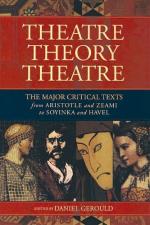|
This section contains 1,638 words (approx. 6 pages at 300 words per page) |

|
SOURCE: "Japanese Noh," in Staging Japanese Theatre: Noh & Kabuki, edited by John D. Mitchell and Miyoko Wantanabe, Institute for Advanced Studies in the Theatre Arts Press, 1994, pp. i-v.
In the following excerpt, Brandon presents a broad overview of the form, content, characters, and staging of No plays and discusses Zeami's role in the drama's development.
Between the tenth and the thirteenth centuries, performers of a number of Japanese theatre forms vied for audience attention and for the patronage of Buddhist temples and the court in and around the important cities of Nara and Kyoto. Jugglers and acrobats, singers of epic romances, and players of various kinds of short plays and dances especially those known as dengaku, literally field music, and sarugaku, monkey music—were part of the theatre scene. Both dengaku and sarugaku troupes performed sketches, songs, and dances, but as independent pieces. Around the middle of the...
|
This section contains 1,638 words (approx. 6 pages at 300 words per page) |

|


